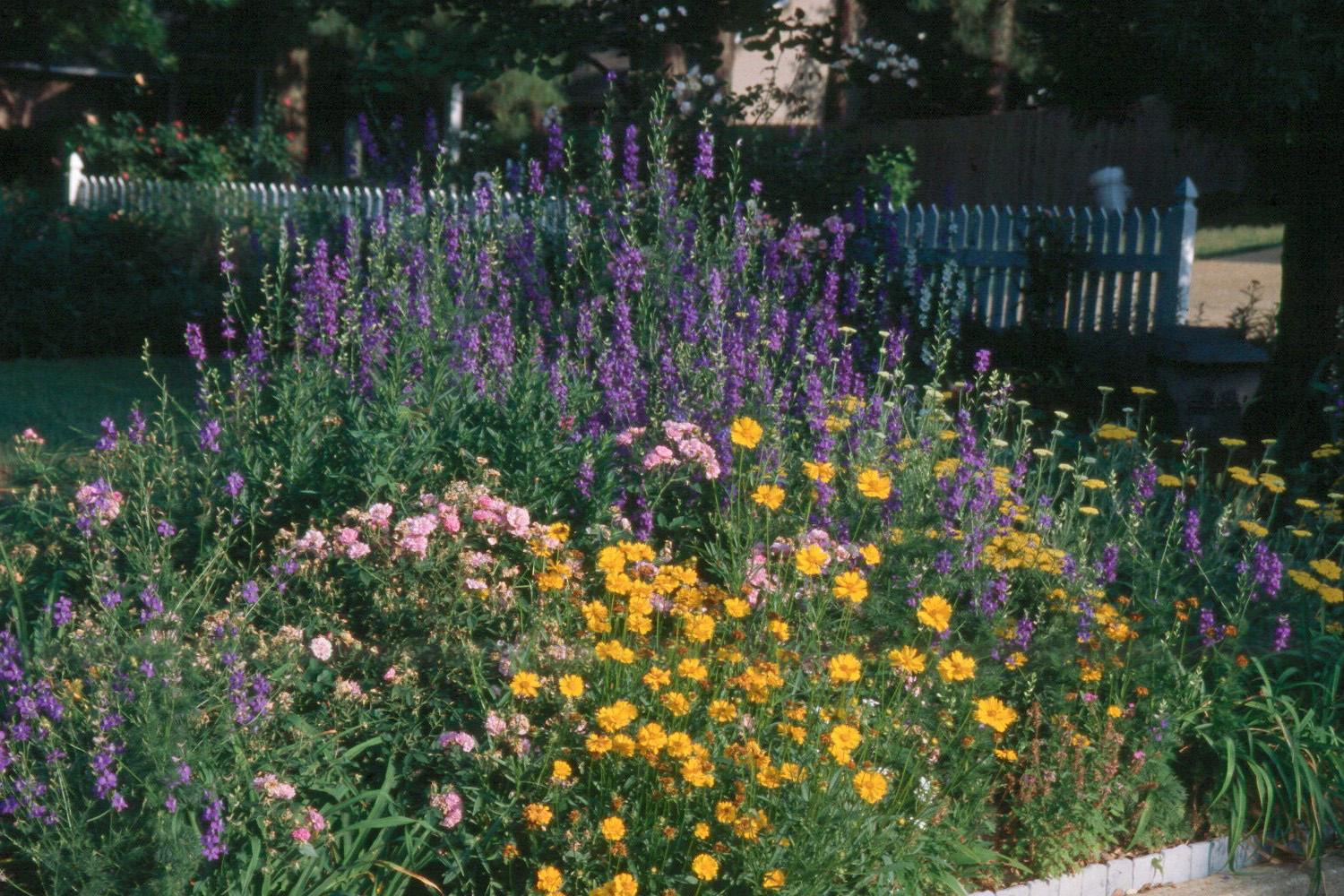Information Possibly Outdated
The information presented on this page was originally released on October 1, 2001. It may not be outdated, but please search our site for more current information. If you plan to quote or reference this information in a publication, please check with the Extension specialist or author before proceeding.
Plant this fall to enjoy larkspurs next spring
By Norman Winter
MSU Horticulturist
Central Mississippi Research & Extension Center
There are no doubt hundreds of us who see beautiful larkspurs each spring in gardens all over the South and wish we had them in our own gardens. The problem is timing.
The time to plant is not when we see them blooming in the garden down the street. By the time spring is over and we have endured summer temperatures, we have forgotten about larkspurs. We start thinking about the fall garden with its mums, pansies and dianthus. The truth is that this is when we should make plans for the spring.
If you want beautiful larkspurs next spring, the time to plant is at hand. There are two plants we call larkspur. Most we see are annuals known botanically as Consolida ambigua. The other is known botanically as Delphinium grandiflorum.
You may have thought we could not grow delphiniums. This one is considered a short-lived perennial, biennial or in our case, an annual. The closely related species reseed and give a perennial-like performance.
Both bloom in pink, bluish-purple and white on long flowering spikes for several weeks in early spring. Buy seeds now and plant in bold drifts in your flower border. They work well mixed with annuals and perennials and would have to rate high on the list of cottage garden-type plants.
One mistake many gardeners make besides planting too late is planting too deep. Many scientists suggest that larkspurs need light to germinate. To get them going in your garden, lightly plant on top of loosened, well-drained soil and tamp with a garden hoe. The seeds will germinate with the cool rains of fall and form small plants. These tiny plants are not the least bit intrusive and can be transplanted in late winter or very early spring if handled with care.
The young plants will establish themselves with good root development during the winter and will put on a show next spring that will make your garden the envy of your neighbors.
Many larkspurs (Consolida ambigua) develop a two-toned color pattern that resembles a bunny on each flower. This is appropriate since they bloom around Easter time. In Texas, Dr. Jerry Parsons, Extension horticulturist in San Antonio, and Master Gardeners have been planting fields of larkspurs, removing all but the pink types for Easter promotion. This species of larkspur has been given the Texas Super Star designation.
The spring bloom of the larkspur gives several great choices for companion plantings. Among the best are coreopsis varieties where the bright gold looks exceptional with the blue flowered types. Ox-Eye daisy, yarrow, and hollyhocks that also take planning are nice partners in the landscape.
Once you get larkspurs started, you will have them around for years to come because they do reseed -- quite prolifically I might add. I have seen beautiful flowers growing in the cracks of sidewalks.
Some gardeners frown at thoughts of reseeding annuals, but to me it is a blessing. Larkspurs should be thinned to about 12 inches to allow for best garden performance.
With a plant as pretty as the larkspur, the sadness doesn't come from plucking unwanted seedlings but with the end of their bloom. It would be even sadder if you wait another year to get yours planted.








